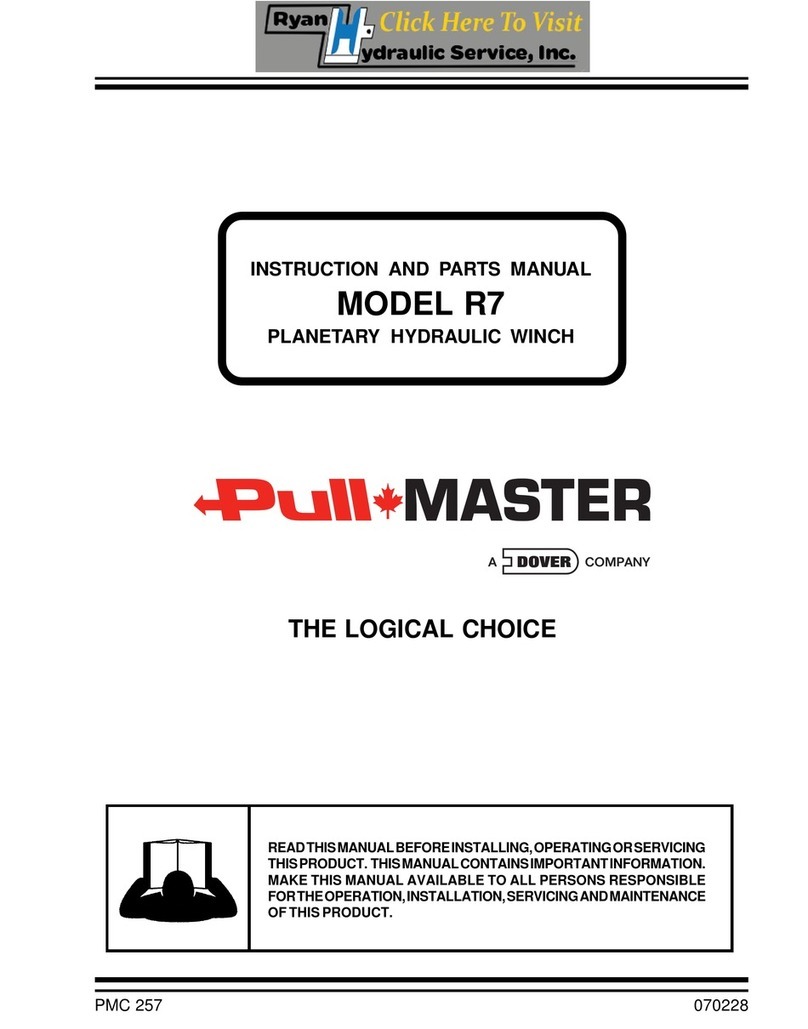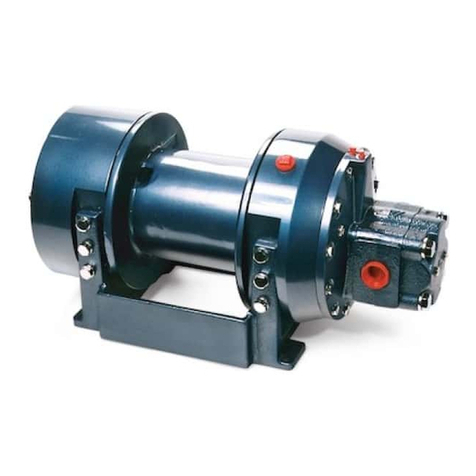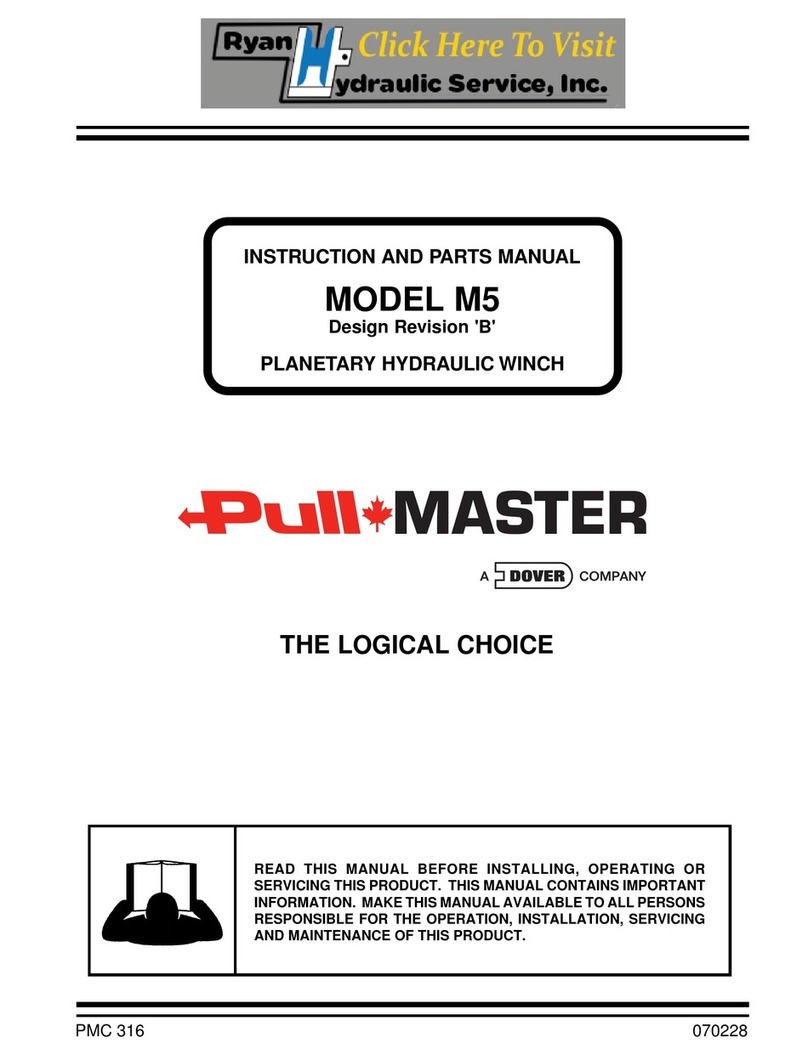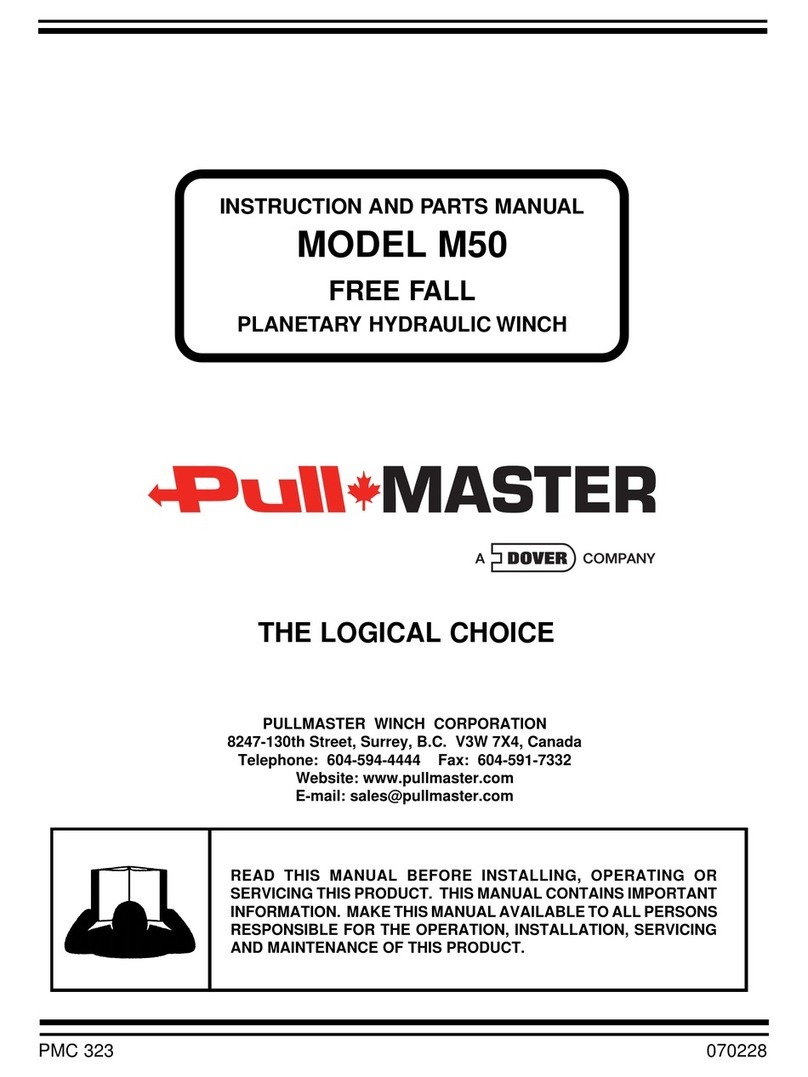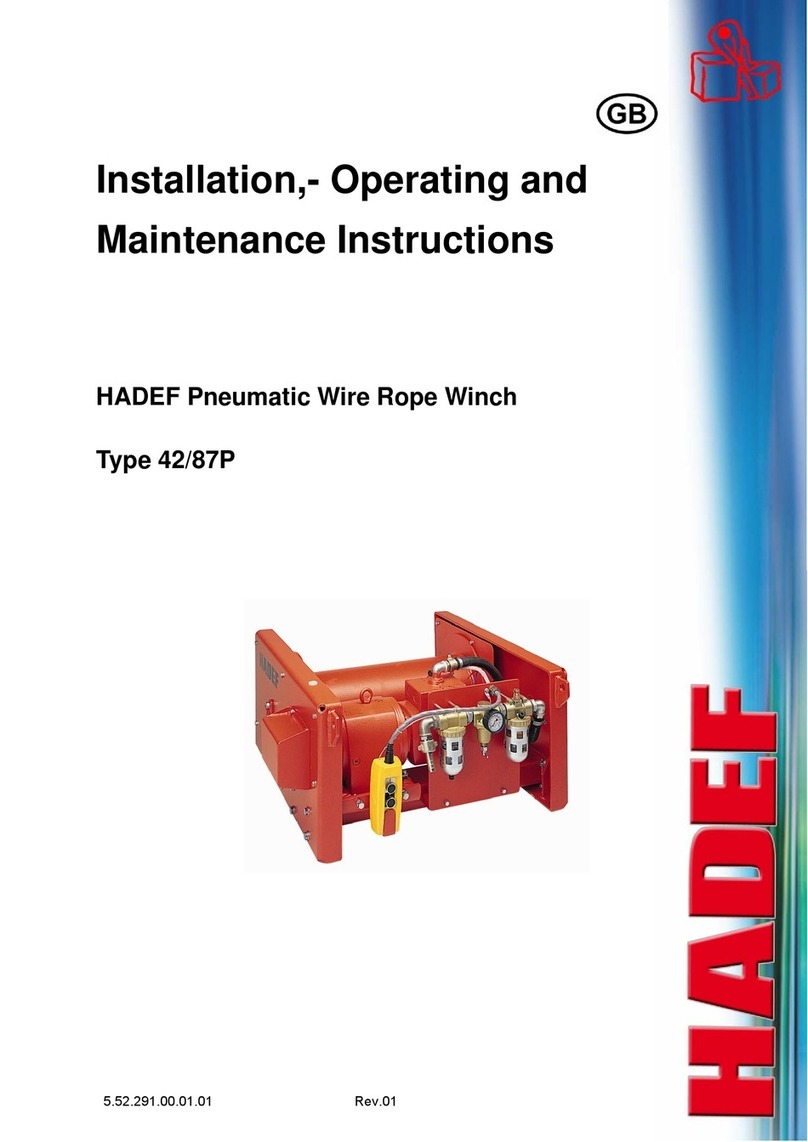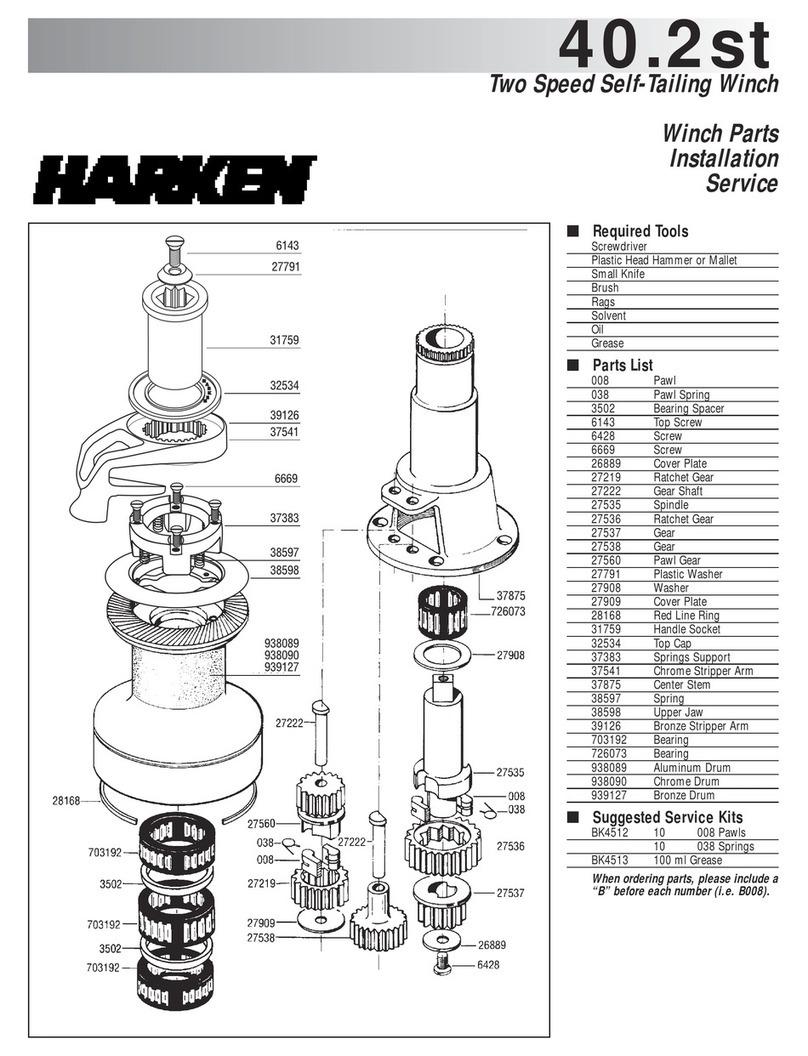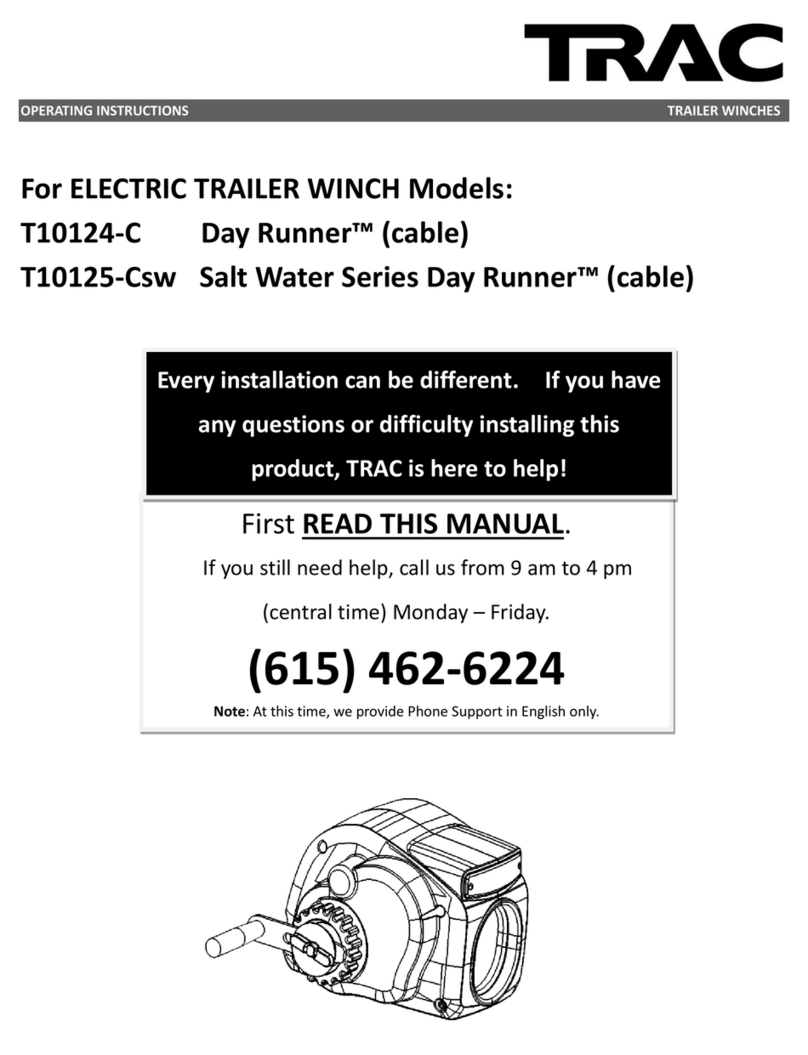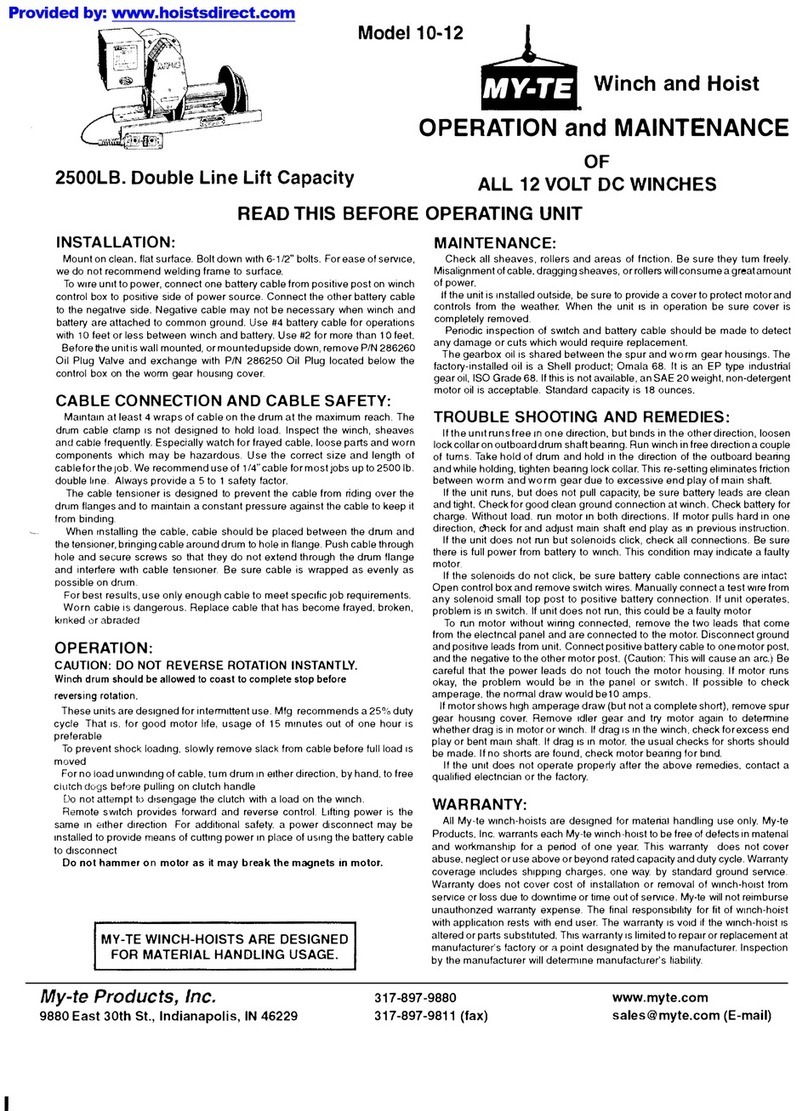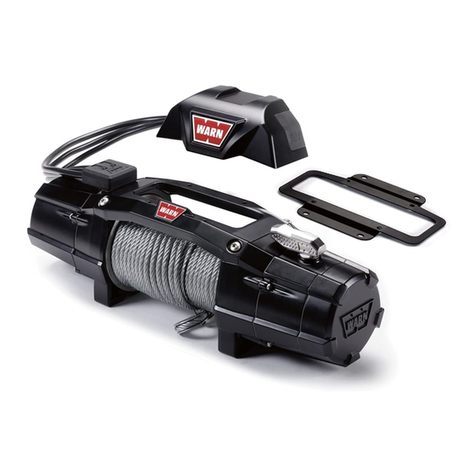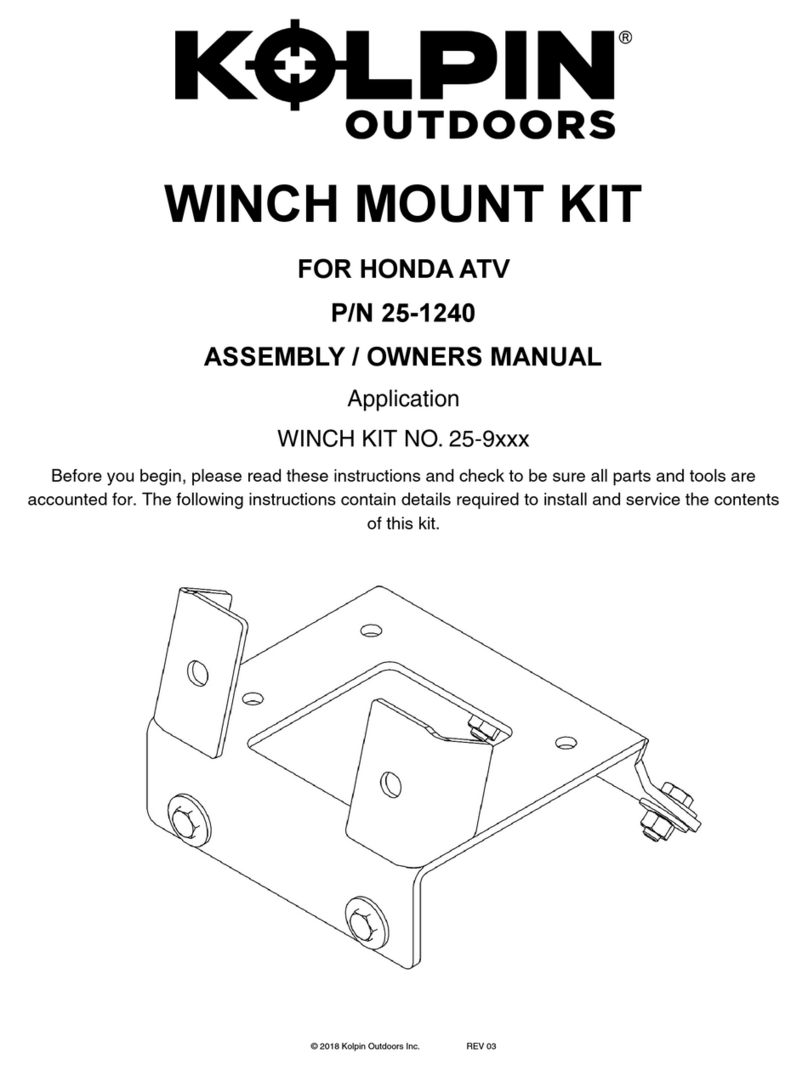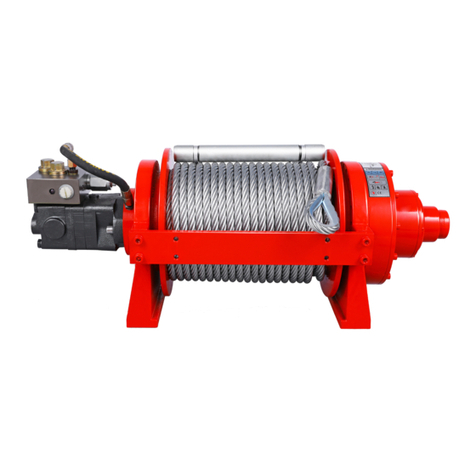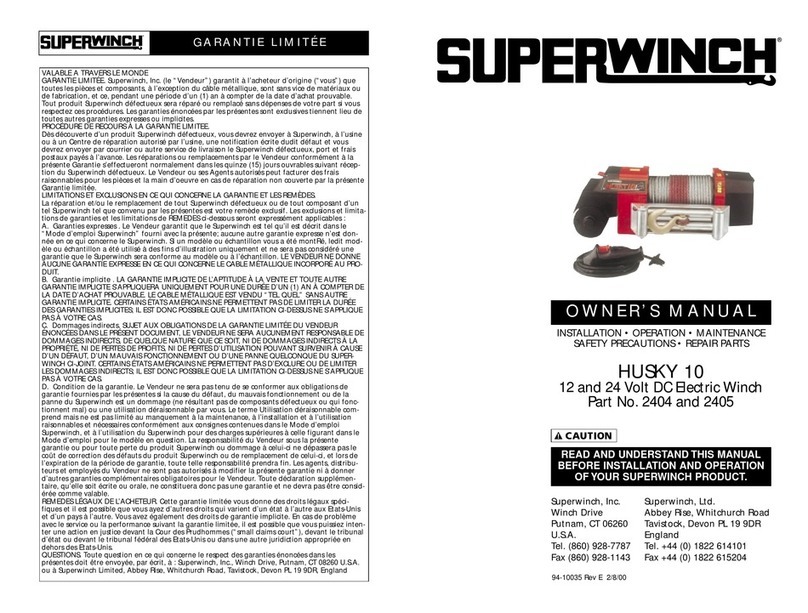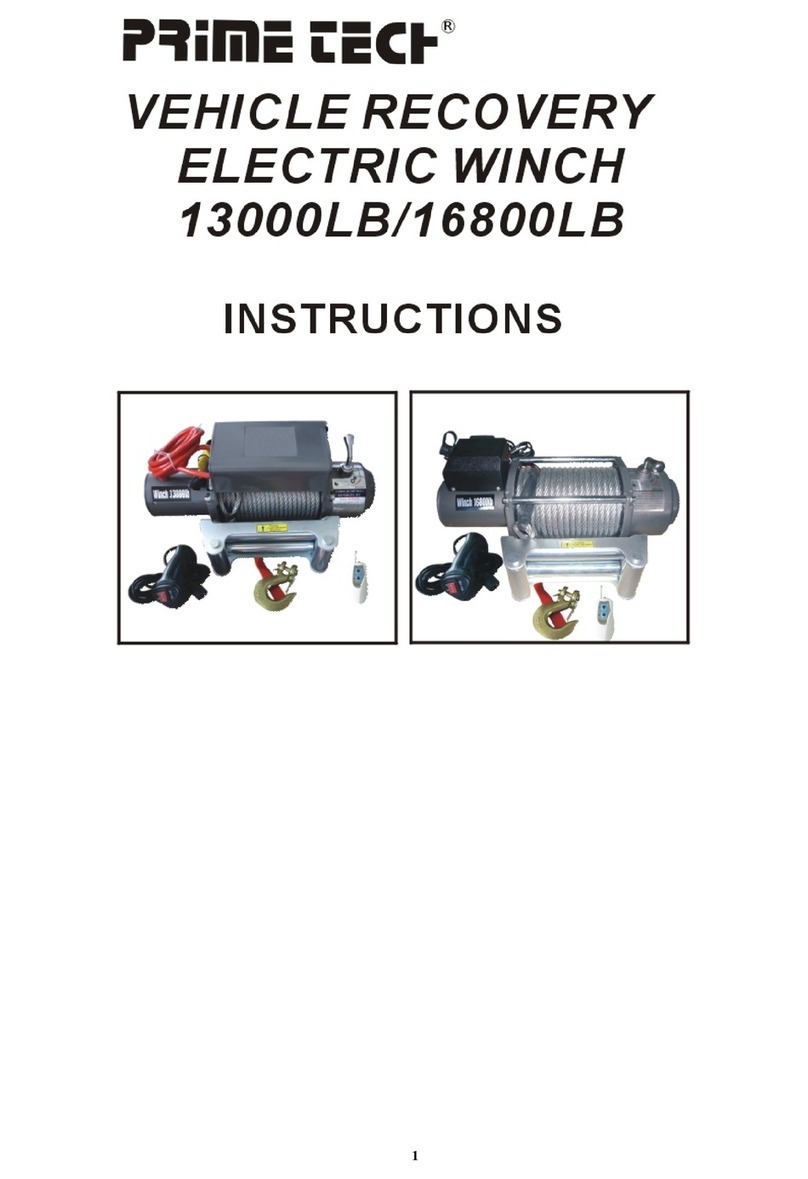
PAGE 17
6) If thrust plate comes off with end cover, carefully pry it off of bearings, item 875, and discard teflon seals,
item 887.
7) Remove gear set, item 881, which consists of two gears which are a matched set.
8) Carefully pry gear housing, item 861, off of motor adaptor, item 800. Thrust plate, item 885, and dowel pins,
item 865, may stay in gear housing.
9) If thrust plate stays on motor adaptor, carefully pry it off of bearings, item 875, and discard teflon seals, item 887.
10) Discard gasket seals, item 869. It is also advisable to replace ring seals, item 877, at this time. Bearings, item
875, have to be removed to allow access to ring seals.
Teflon seals, gasket seals and ring seals in the hydraulic motor assembly are not part of winch seal kit. Seal kit
for hydraulic motor can be ordered from factory under Part No. 23117. All parts of the hydraulic motor, with
exception of motor adaptor, item 800, and port end cover, item 870, are standard parts of the hydraulic motor,
having a 3 inch gear section. All of these parts can be ordered from PULLMASTER or Authorized Distributors/
Dealers in Canada, the United States and in most overseas areas.
REMOVAL OF HYDRAULIC GEAR MOTOR ASSEMBLY:
If disassembly of the hydraulic gear motor is not necessary, proceed as follows:
1) Remove transfer tube assembly, item 844, as instructed in step 1 - 3 under DISASSEMBLY OF HYDRAULIC
GEAR MOTOR ASSEMBLY.
2) Remove nine hex head capscrews, item 931, with lockwashers, item 541, and remove motor adaptor, item
800, from clutch housing, item 650.
3) Remove and discard three O-rings, item 801, from flange of motor adaptor.
REMOVAL OF HYDRAULIC PISTON MOTOR:
If fitted with a piston motor, proceed as follows:
1) Remove brake tube assembly, item 852, from motor and motor adaptor, item 800.
2) Remove four hex head capscrews, item 815, and lockwashers, item 817, from motor, item 850. Pull motor
out of motor adaptor, item 800, and discard O-ring, item 819.
3) Remove nine hex head capscrews, item 931, with lockwashers, item 933. Remove motor adaptor, item 800,
and discard three O-rings, item 801.
4) Unscrew six socket head capscrews, item 687, with lockwashers, item 685, and remove bearing carrier, item
664, from motor adaptor. Discard, O-ring, item 667. Remove two seal rings, item 666.
5) Remove clutch connector, item 668, from bearing carrier, item 664, and check that oil passages are clear.
6) Inspect ball bearing, item 665, for damage. If replacement is required, press out of bearing carrier, item 664.
7) Inspect needle bearing, item 669, in motor adaptor. If damaged, press out of motor adaptor and replace.
DISASSEMBLY OF CLUTCH ASSEMBLY:
1) Remove three socket head capscrews, item 682, and lockwashers, item 683, from clutch housing, item 650.
Since brake springs, item 752, apply pressure against inside of clutch housing, it is recommended that these
three capscrews are unscrewed, one turn at a time, until spring pressure has been released. Remove and
discard O-ring, item 707, and O-ring, item 651. Remove and discard three O-rings, item 763.
2) Pull motor drive shaft, item 730, and complete clutch assembly, from brake housing.
3) Disassemble clutch assembly by removing circlip, item 671, from clutch hub, item 670. Remove clutch plate,
item 654, external retaining ring, item 658, eight friction plates, item 673, and seven divider plates, item 675.
SERVICE INSTRUCTIONS CONTINUED
313 REV.010201




















